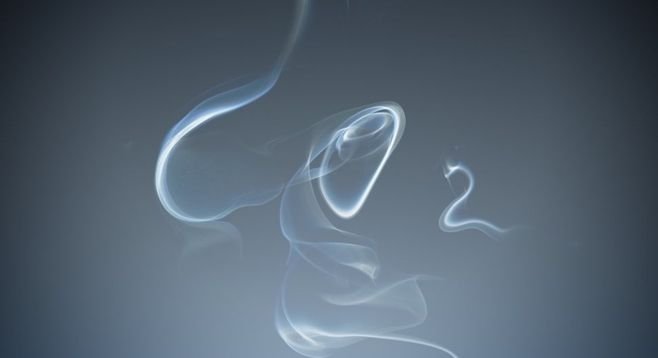 Facebook
Facebook
 X
X
 Instagram
Instagram
 TikTok
TikTok
 Youtube
Youtube

Heymatt:
If fire extinguishers use carbon dioxide to snuff out flames, why is it that the CO2 in expelled breath doesn’t blow out a fire? In fact, blowing on a hot ember usually causes it to burn brighter.
— Paul
It’s the same reason that artificial respiration (sort of) works. Namely, exhaled breath contains more than enough oxygen to sustain combustion. In fact, blowing on a fire makes the flames flare up because the rapid air circulation introduces more oxygen to the flame than is available in ambient air. Carbon dioxide gas will extinguish a flame, provided the concentration is high enough, although it’s technically correct that lack of oxygen (rather than the presence of CO2) is the cause of extinguishment.
Blowing out a candle, on the other hand, is a different process, and a fascinating one at that. It’s not lack of oxygen that puts out a candle when you blow on it. Fanning it out works just as well and uses fully oxygenated air. With candles, what’s burning is a miniature cloud of vaporized wax gasses, not the wick itself. The heat of the fire evaporates the wax, which provides more gas to burn, which in turn vaporizes more wax and the cycle repeats until the candle is all burned down. When you blow on a candle, the little bubble of wax gas disperses and the flame goes out. Don’t forget to make a wish.


Heymatt:
If fire extinguishers use carbon dioxide to snuff out flames, why is it that the CO2 in expelled breath doesn’t blow out a fire? In fact, blowing on a hot ember usually causes it to burn brighter.
— Paul
It’s the same reason that artificial respiration (sort of) works. Namely, exhaled breath contains more than enough oxygen to sustain combustion. In fact, blowing on a fire makes the flames flare up because the rapid air circulation introduces more oxygen to the flame than is available in ambient air. Carbon dioxide gas will extinguish a flame, provided the concentration is high enough, although it’s technically correct that lack of oxygen (rather than the presence of CO2) is the cause of extinguishment.
Blowing out a candle, on the other hand, is a different process, and a fascinating one at that. It’s not lack of oxygen that puts out a candle when you blow on it. Fanning it out works just as well and uses fully oxygenated air. With candles, what’s burning is a miniature cloud of vaporized wax gasses, not the wick itself. The heat of the fire evaporates the wax, which provides more gas to burn, which in turn vaporizes more wax and the cycle repeats until the candle is all burned down. When you blow on a candle, the little bubble of wax gas disperses and the flame goes out. Don’t forget to make a wish.
Comments